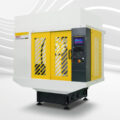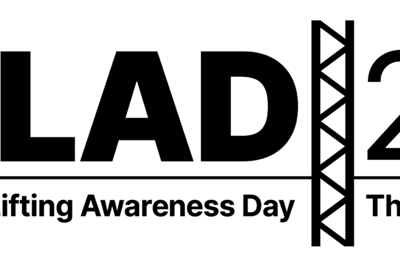Bunting was successful in winning a bid to supply Ford Motor Company with an in-house designed and built bespoke industrial magnetising system for use in a prototype build area. The industrial magnetising system charges and tests a magnet rotor assembly, which forms part of a new Transit electric power unit presently under development.
Bunting is one of the world’s leading designers and manufacturers of magnets, magnet assemblies and magnetising equipment. The Bunting European engineering and manufacturing facilities are in Berkhamsted and Redditch, both in the United Kingdom.
Over 120 years, Ford Motor Company has developed its reputation as a leading global manufacturer and innovator in the automobile industry. The Ford Transit has been the UK’s best-selling light commercial vehicle range since its debut in 1965, now electrified with the two-tonne E-Transit, one-tonne E-Transit Custom and compact E-Transit Courier.
Industrial magnetisers enable the charging of both permanent magnets and magnet assemblies, with a diverse range of applications in the automotive industry. Post-assembly magnetisation of uncharged magnet assemblies enables the generation of magnetic fields with very tight tolerances. There are also manufacturing and safety benefits.
The BMC Series industrial magnetisers are designed to meet the higher energy demands of the some of the more complex industrial applications. The modular construction allows the supply of a wide range of energy levels to these magnetisers, with different voltage and capacitance configurations depending on the application; and with multiple magnetising fixture outputs. The PLC control interfaces with the customer’s own production systems. The BMC series of industrial magnetisers are suitable for most industrial applications from simple 2-pole fixtures to high energy multi-pole magnetisation such as flywheels, permanent magnet rotors or traction motors.
The industrial magnetiser designed for the Ford Motor Company allows for multi-step magnetic charging of an uncharged complex magnet rotor assembly. In operation, the unmagnetised and safe magnet rotor is manually placed into the loading position before starting the automated cycle.


Once the magnet rotor is engaged and held securely, it is moved up into the centre of the magnetising fixture. Then, the PLC control delivers a calculated energy level to the magnetising fixture, which generates the targeted magnetic field in the magnet rotor assembly. To generate the specific magnetic properties for this particular application, the magnet rotor assembly is automatically rotated and indexed along its length.
Once the charging cycle is complete, the magnet rotor assembly moves up into the test area where the magnetic flux is measured and recorded. On completion, the charged magnet rotor assembly moves back down through the magnetising fixture and into the original loading position for manual removal.
The growing demand in the automotive industry for controlled magnetisation of magnet assemblies with very tight tolerances has driven the development of Bunting’s range of industrial magnetising systems. Bunting the only company in the world to design both magnet assemblies and magnetising systems and that unique engineering expertise enables the development of complex bespoke solutions.
“The development of this industrial magnetising system has been a collaboration between our engineers at Bunting and Ford’s engineering team,” explained Matthew Swallow, Bunting’s Technical Product Manager. “This is one example of a growing demand for complex magnetising systems for uncharged magnet assemblies.”
For further information, please contact us on [email protected] or visit our website:
Bunting-Berkhamsted – www.bunting-berkhamsted.com








